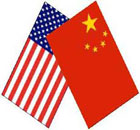Economy
Nanning welcomes free trade zone
By Huo Yan and Huang Feifei (chinadaily.com.cn)
Updated: 2009-12-22 13:18
 |
Large Medium Small |
Nanning, the capital of the Guangxi Zhuang Autonomous Region, will launch multiple efforts to welcome the China-ASEAN Free Trade Area (CAFTA) next month.
The CAFTA, which goes into effect January 1, 2010, will include 1.9 billion people. It will also eliminate all tariffs on 90 percent of products traded between China and countries in the Association of South East Asian Nations (ASEAN). (ASEAN includes 10 countries: Brunei, Cambodia, Indonesia, Laos, Malaysia, Myanmar, the Philippines, Singapore, Thailand and Vietnam.)
Nanning is focused on strongly supporting the free trade zone.
Nanning's trade volume with ASEAN has grown rapidly, and bilateral trade reached $390 million in 2008, an increase of 72.38 percent year-on-year.
"ASEAN has become the Nanning's largest trading and investment partner," said Zeng Pengxin, deputy director of the commerce bureau of Nanning.
Among the city's efforts to support CAFTA are:
- Strong government support for enterprises which want to expand their operations overseas
"Nanning government has vigorously encouraged the city's enterprises to 'go out to the world'. It would also introduce the CAFTA to them and guide them in promoting bilateral economic and trade cooperation," Zeng said.
- Political and cultural exchange areas
Five countries - Vietnam, Cambodia, Laos, Myanmar and Thailand – have established consulates in Nanning. In addition, a China-ASEAN Business District will be completed in 2010 in Nanning. It will occupy three square kilometers of land divided into five functional areas, including a core business district, a consulate area, and a section for ASEAN international schools. A China-ASEAN Legal Training Base, a China-ASEAN youth training base, and a China-ASEAN Women's Training Center have all also been set up.
- New and comprehensive transportation infrastructure
The Nanning government has focused heavily on connecting the city to ASEAN countries. It recently finished a 179 kilometer-long expressway connecting the city to Vietnam. On January 1 of this year, a train route was also completed between Nanning and Hanoi, the capital of Vietnam. Nanning is now working on the construction and improvement of a network of rail and expressways connecting it with Hanoi, Phnom Penh, Bangkok, and Kuala Lumpur, which together will gradually form an economic corridor linking Nanning to Singapore.
By the end of 2009, Nanning will also have completed a 118 billion yuan of investment on its subway system, and the Nanning airport will be able to handle 15 million passengers.
"Nanning is located in the Economic Circle of South China, and is the gateway to ASEAN. Nanning has developed into an international city, and has become the transit cargo distribution hub," said Huang Fangfang, mayor of the city. "So we have been dedicated to offer ideal transportation infrastructure to traders," Huang said.
- A friendly investment environment
Nanning will create a favorable trade and investment environment and promote the healthy development of a free trade zone.
"We will reduce the time to build, change or cancel the registration of foreign-invested enterprises from a statutory 20 working days to three working days. We have formed some working mechanisms, such as the implementation of handling special matters and the establishment of the consultation centers for foreign-invested enterprises to handle and guide annual business," said an official from the local commerce and industry bureau.
- Effective training
A series of lectures and seminars were held frequently in the city in recent months to explain the policies of the free trade area. For example, in early October, the Democratic National Construction Association of the Municipal Party Committee in Nanning held a course of lectures titled "The trade trends and economic policy environment under the completion of China-ASEAN Free Trade Area in 2010". The lecture attracted a total of more than 100 Democratic National Construction Association members, entrepreneurs, and community readers.







